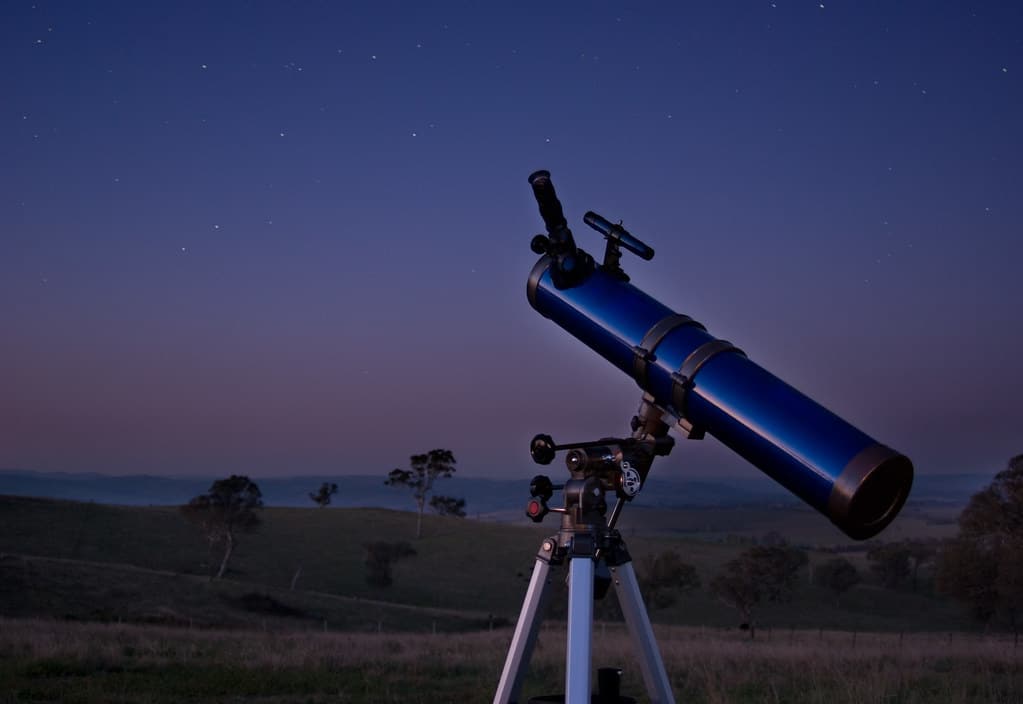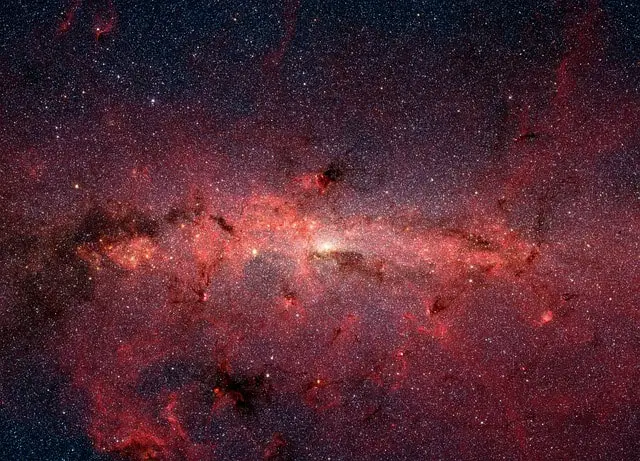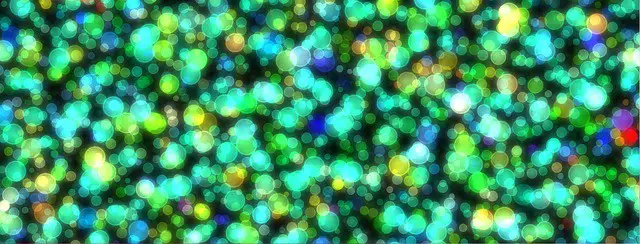
Much depends on the condition of the atmosphere on how well you can see as you start to magnify. Check out our quick chart on some typical name brand telescopes and how based on their specs, you can determine the theoretical max magnification will be.
Quick Table:
| Popular Brand | model | focal length | f/ ratio | Aperture in mm | Max Mag | Smallest Useful Eyepiece In mm | Eyepiece to see Saturn Rings | Research Specs on Amazon |
|---|---|---|---|---|---|---|---|---|
| Celestron | Power Seeker 127EQ | 1000 | f/8 | 127 | 40 | 8 | 20 | Learn More |
| Meade | Infinity 70 | 700 | f/10 | 70 | 28 | 10 | 14 | Learn More |
| Gskyer | AZ70400 | 400 | f/5.7 | 70 | 16 | 6 | 8 | Learn More |
| Celestron | TravelScope 70 | 400 | f/5.7 | 70 | 16 | 6 | 8 | Learn More |
| Meade | ETX90 | 1250 | f/13.8 | 90 | 50 | 14 | 25 | Learn More |
| Meade | Polaris 130EQ | 650 | f/5 | 130 | 26 | 5 | 13 | Learn More |
| Gysker | EQ901000 | 1000 | f11.1 | 90 | 40 | 11 | 20 | Learn More |
| Celestron | Adv VX8 EdgeHD | 2032 | f10 | 203 | 81.28 | 10 | 40.64 | Learn More |
| Orion | SkyQuest XT8i | 1200 | f/5.9 | 203 | 48 | 6 | 24 | Learn More |
This chart, as mentioned, was figuring an average fair weather night. As an example, if you could take your telescope to space, you would be able to get a much higher, probably more than twice the magnification ability before the blurry comes into the picture. Of course, it is dependent on lens quality as well.
Download Our Free Telescope Calculator and Calculate Your Scopes Capability
Download the calculator here. You can calculate all the numbers you ever may need to know for your telescope. Use it for the scope you are thinking of buying as a comparative analysis. It is simple to use. Click Here
What All Does Come In To Play with Magnification and Blurriness?
Whether you are a newbie or professional in Astronomy, you are still going to experience blurry images at some point while viewing through your telescope.
This is because several things are affecting the clearness of the image you are seeing in your scope. These factors may either be controllable or not. Controllable variables influencing magnification includes the focal length of your scope and the eyepiece size, or aperture.
Meanwhile, the uncontrollable factors can include the atmosphere, the observer’s eye condition, and slight deviations of the objective lens’ specified focal length.
Here now, we can start to dig deeper on the essential things regarding scope magnification and how it works.
How Does Telescope Magnification Work?
Our naked eye does not have enough ability to view objects located from far distances. This happens because our eye can no longer accept enough light coming from the object. Thus, one tends to see a smaller and blurry image of the object from afar.
Because of a hankering curiosity for what was out there, the telescope and other optic systems were invented to help us see objects that we could not otherwise see. The telescope collects light from very far distances like the galaxies, planets, and nebula.
The key to seeing things much clearer is having an objective lens which can capture huge amounts of light from the object. So, bigger is better, at least in this case. This is the main concept driving the mechanism of a telescope.
A telescope is composed of two lenses or mirrors: the objective end and the eyepiece lens. Both lenses are located at opposite terminal ends.
The wide objective lens or mirror is responsible for gathering the light from stars and other objects which travels down the scope’s focal length and converges at the focal point. After meeting at the focal point, it then diverges and emerges out from the eyepiece lens where the observer views the object. The eyepiece lens is responsible for magnifying the light going towards the observer’s eye.
Telescope Magnification Formula
Magnification or power of a telescope is its ability to enlarge small objects from far distances. This feature can be manipulated using different combinations of objective and eyepiece lens.
In general, when the magnification of scope increases, the image brightness, and field of view (FOV) decreases. When comparing magnification versus field of view, the second feature has a more significant impact on the performance of any scope.
The formula for computing the magnification or power of a telescope:
Sample Computation:
You bought a telescope with a focal length of 600 mm, and the eyepiece’s focal length is 30 mm. What is the magnification of your scope?
Aside from that, you can also compute for the theoretical maximum magnification of your scope. You can do this in two ways: (1) scope’s aperture in inches multiplied by 50 or (2) focal length of aperture in millimeters times two.
In contrast, the minimum magnification of any scope is equivalent to its exit pupil diameter. This refers to the cone size of light emerging out from the eyepiece lens.
You also have two means of computing for the minimum magnification: (1) aperture focal length expressed in inches multiplied by 3.6 or (2) aperture expressed in millimeters divided by 7.
See our full article on telescope equations for more detailed information, or download our free Telescope Equations calculator.
What Magnification Do I Need To See Planets
Before going to the answer to this question, let us first cite a few points to bear in mind. We already know what magnification is, so let us try to know the reason why you need a bigger aperture to ensure higher magnification.
- As magnification increase, the image gets dimmer, which means you need a wider aperture to capture more light to make the resulting image brighter.
- If you want to have an excellent resolution, then you need to have a wider aperture.
In general, it is pointless to have a magnification higher than 2x the aperture (in millimeters) of your scope, because the image clarity will still be dependent on the time, season, and atmospheric condition of viewing.
Consequently, the ideal scope for your planet viewing must have an aperture bigger than 100 mm and scope focal length longer than 1000 mm.
A good rule of thumb for the magnification of viewing planets is the aperture diameter in millimeters multiplied by two or the objective lens in inches multiplied by 50.
Consequently, if you have a scope with a focal length of 1000 mm and an aperture diameter of 100 mm, then its maximum magnification is around 200x. You need to use an eyepiece with a focal length of 5 millimeters to acheive the 200X magnification.
Likewise, this scope with a 20mm eyepiece would bring Saturn and its rings into view.
Meanwhile, if you plan to view planets Neptune and Uranus, you need to use a scope with higher magnification. Telescopes must have a higher focal ratio, say an f/10 or so focal length and preferably an aperture over 100mm to achieve useful magnification.
A good example telescope for planet viewing is the Meade LX65, it has a focal length of 1800mm and an aperture of 150mm. So, that means the rule of thumb is 300X useful magnification. It comes with a 26mm Plossl eyepiece that allows you to see Saturn and discern its rings creating 69X Mag.
For example, check out more specs on Amazon for the Meade Lx65 6″ Maksutov-Cassegrain
Calculate your telescopes ability to see Saturn
An Example Chart
Recall the formula for computing magnification or power of a scope. That is the focal length of the telescope divided by the eyepiece’s focal length.
Below is a sample table containing easy math for details on focal lengths of telescopes, eyepieces, and the resulting magnifying power.
| Focal Length of Telescope | Focal length of Eyepiece | Magnification |
| 1000 mm | 30 mm | 33.33x |
| 1000 mm | 20 mm | 50x |
| 2000 mm | 30 mm | 66.67x |
| 2000 mm | 20 mm | 100x |
Why Not Use the Magnification Number as a Buying Decision?
It is a wrong concept to have magnification as your determining factor in choosing for the best telescope. Why? Because magnification does not reflect the overall performance of a telescope. This feature can be mainly manipulated through various combinations of objective and eyepiece lens.
Consequently, this makes magnification a very weak variable in choosing the right scope for your requirements. There are other important things worth noting when looking for the proper telescope.
For instance, the aperture is an important variable to consider. It is essential because the amount of light entering the scope is dependent on the diameter of the aperture. The wider the aperture, the more light that comes in, and the brighter the image that is perceived by the observer.
Other notable features worth noting include resolving power and the field of view (FOV). The resolving power refers to the scope’s ability to clearly see the separation between two bodies closely-spaced with each other.
Whereas, the field of view pertains to the amount of space in the sky which you can view from the eyepiece. A clear understanding of this will help you interpret what you see through the telescope and a chart generated by computer programs like Stellarium.
Need More?
The universe and everything outside the Earth’s atmosphere is fascinating. Before the telescope was invented, people always looked up and wondered what things were above their night sky.
After the invention of the telescope, constant study about celestial bodies, planets, and stars happened in various societies and academic institutions. This instrument greatly helped in the advancement of Astronomy and studying the universe.
Speaking about telescopes, Check out our articles on the James Webb Space Telescope like this one: What Kind of Scope is NASA’s James Webb Space Telescope?
Other articles that cover magnification are: Astronomy Formulas Explained with Sample Equations.
If you have any questions or need clarifications, please feel free to leave a message.


